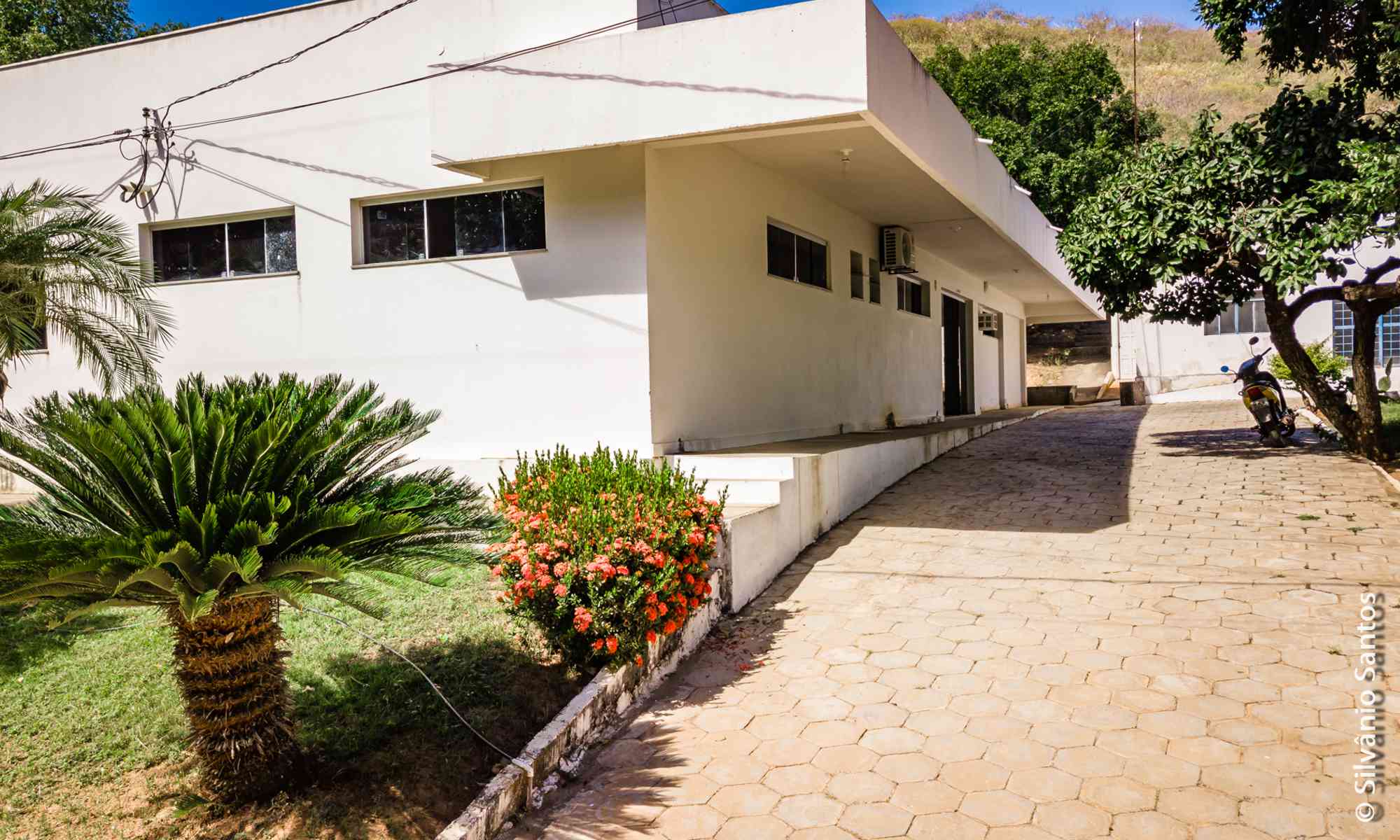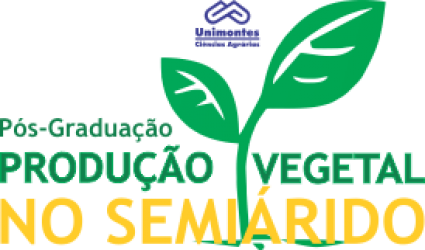- Version
- Download 13
- File Size 306.06 KB
- Create Date 16/06/2021
- Download
LOPES, Elisete Pedreira. Efeito de tortas de algodão, mamona e pinhão manso na biologia de Fusarium oxysporum f. sp. cubense e no desenvolvimento da bananeira “prata anã”. 2009. 56 p. Dissertação (Mestrado em Produção Vegetal no Semiárido) – Universidade Estadual de Montes Claros, Janaúba, 2009.
Uma das medidas preconizadas para manejo do Mal do Panamá é a adição de matéria orgânica no solo. Os resíduos da produção do biodiesel apresentam grande potencial para utilização neste sistema. Assim objetivou-se neste trabalho avaliar o efeito de diferentes concentrações das tortas de algodão, mamona e pinhão manso no desenvolvimento de Fusarium oxysporum f. sp. cubense (FOC) e de mudas de bananeira Prata-Anã. Para avaliar o efeito no desenvolvimento de FOC, as tortas foram filtradas e adicionadas ao meio BDA de forma a calibrar as concentrações na placa para 0,25; 0,5; 1,0; 1,25 e 2,5%. Um disco do micélio de FOC foi transferido paras as placas, posteriormente, foram incubadas por dez dias e, avaliadas quantificando-se o crescimento micelial, a esporulação, a produção de clamidósporos e a germinação de conídios. Em casa de vegetação mudas de bananeiras inoculadas com 10 3 esporos/mL e não inoculadas foram transplantadas para vasos contendo o solo mais as tortas de forma a ajustar as mesmas concentrações descritas anteriormente. As plantas foram mantidas em casa de vegetação, e após 81 dias quantificaram-se: o número de folhas, o peso de matéria seca de raiz, 0 peso de matéria seca de parte aérea, a altura de planta e a severidade do Mal do Panamá. Não houve efeito fungitóxico dos filtrados de nenhuma das tortas sobre o crescimento micelial. A produção de conídios na presença de pinhão manso foi inversamente proporcional ao aumento das concentrações e na presença de torta de algodão e mamona houve estímulo de esporulação. Houve uma redução de mais de 70% de germinação na presença das três tortas nas maiores concentrações testadas. A produção de clamidósporos foi estimulada na maioria das concentrações de pinhão manso e algodão, e nas menores concentrações houve redução do número de clamidósporos. Não houve efeito de redução da severidade do Mal-do-Panamá em nenhuma das concentrações nas três tortas testadas. A concentração de 2,5% em todas as tortas causou fitotoxidez às plantas. Para a variável número de folhas, apenas pinhão manso na maior concentração apresentou média estatisticamente superior a testemunha. O peso de matéria seca de raiz foi maior nos tratamentos com adição de tortas e sem a presença do patógeno, independente da torta adicionada. Com a adição das concentrações houve redução desta variável nos tratamentos com ausência de FOC e um estímulo nos tratamentos inoculados com FOC até a concentração 0,78% para torta de algodão e 0,25% para as tortas de mamona e pinhão manso. Houve um incremento de matéria seca de parte aérea com o aumento das concentrações para as tortas de algodão, independente da presença do patógeno. Para mamona na ausência de FOC, o modelo ajustado foi quadrático com incremento até a concentração de 0,79%. Em pinhão manso o efeito das concentrações foi evidenciado apenas para os tratamentos com ausência de FOC que mostrou aumento linear com incremento das concentrações. Em todas as combinações de tortas e concentrações com e sem a presença de FOC, houve incremento da altura de plantas, exceto no tratamento de pinhão manso sem a presença de FOC para o qual se ajustou o modelo quadrático com redução desta variável a partir da concentração 0,56% de torta
Termos para indexação: Musa spp., Mal-do-Panamá, torta.
Use of cotton, castor oil plant and physic nut cakes on the Fusarium oxysporum f. sp. cubense biology and on the banana “Prata-Anã” development
One of the preconized measures for management of the Panama Disease is the addition of organic matter in the soil. The residues of the biodiesel production present great potential for use in this system. Thus, in this work aimed to evaluate the effect of different concentrations of the cotton, castor bean and physic-nut cakes on the development of Fusarium oxysporum f. sp. cubense (FOC) and banana Prata-Anã plants. In order to evaluate the effect on development FOC, the cakes were filtered and added to the BDA medium to gage the concentrations at the plate for; 0,25; 0,5; 1,0; 1,25; and 2,5%. A mycelium disk of FOC was transferred to the plates, afterward, were incubated for ten days and appraised being quantified the mycelium growth, the sporulation, the chlamydospores production and the conidia germination. In greenhouse, banana plants inoculated with 10 3 spores/mL and no inoculated were transplanted to vases with soil and cakes to adjust the same concentrations described previously. The plants were maintained in the greenhouse, and after 81 days were quantified: number of leaves, weight of the dry root, weight of the dry leaf area, plant height and severity of the Panama Disease. There was not fungi toxic effect of the filtrates of any cake on the mycelium growth. The conidia production in the presence of physic-nut was inversely proportional to the increase of the concentrations and in the presence of cotton cake and castor bean there was sporulation stimulus. There was a reduction of more than 70% of germination in the presence of the three cakes in the most tested concentrations. The chlamydospores production was stimulated in most of the concentrations of physic-nut and cotton, and in the smallest concentrations there was a decrease in the chlamydospores number. There was not effect of reduction of the severity of the Panama Disease in any of the concentrations in the three tested cakes. The concentration of 2,5% in all of the cakes caused phytotoxity to the plants. For variable number of leaves, only physic-nut in the largest concentration presented average superior statistically to the control. The dry root weight was greater in the treatments with addition of cakes and without the presence of the pathogen, independent of the added cake. With the addition of the concentrations, there was reduction of this variable in the treatments with absence of FOC and an stimulus in the treatments inoculated with FOC until the concentration 0,78% for cotton cake and 0,25% for the castor bean and physic-nut cakes. There was an increment of weight of dry leaf part with the increase of the concentrations for the cotton cakes, independent of the pathogen presence. For castor bean in the absence of FOC, the adjusted model was quadratic with increment until the concentration of 0,79%. In physic-nut the effect of the concentrations, was just evidenced for the treatments with absence of FOC that showed lineal increase with increase of the concentrations. In all of the combinations of cakes and concentrations with and without the presence of FOC there was increment of the height of plants, except in the treatment of physic-nut without the presence of FOC for which the quadratic model was adjusted with reduction of this variable from the concentration 056% of cake
Index terms: Musa spp., Panama Disease, cake.

